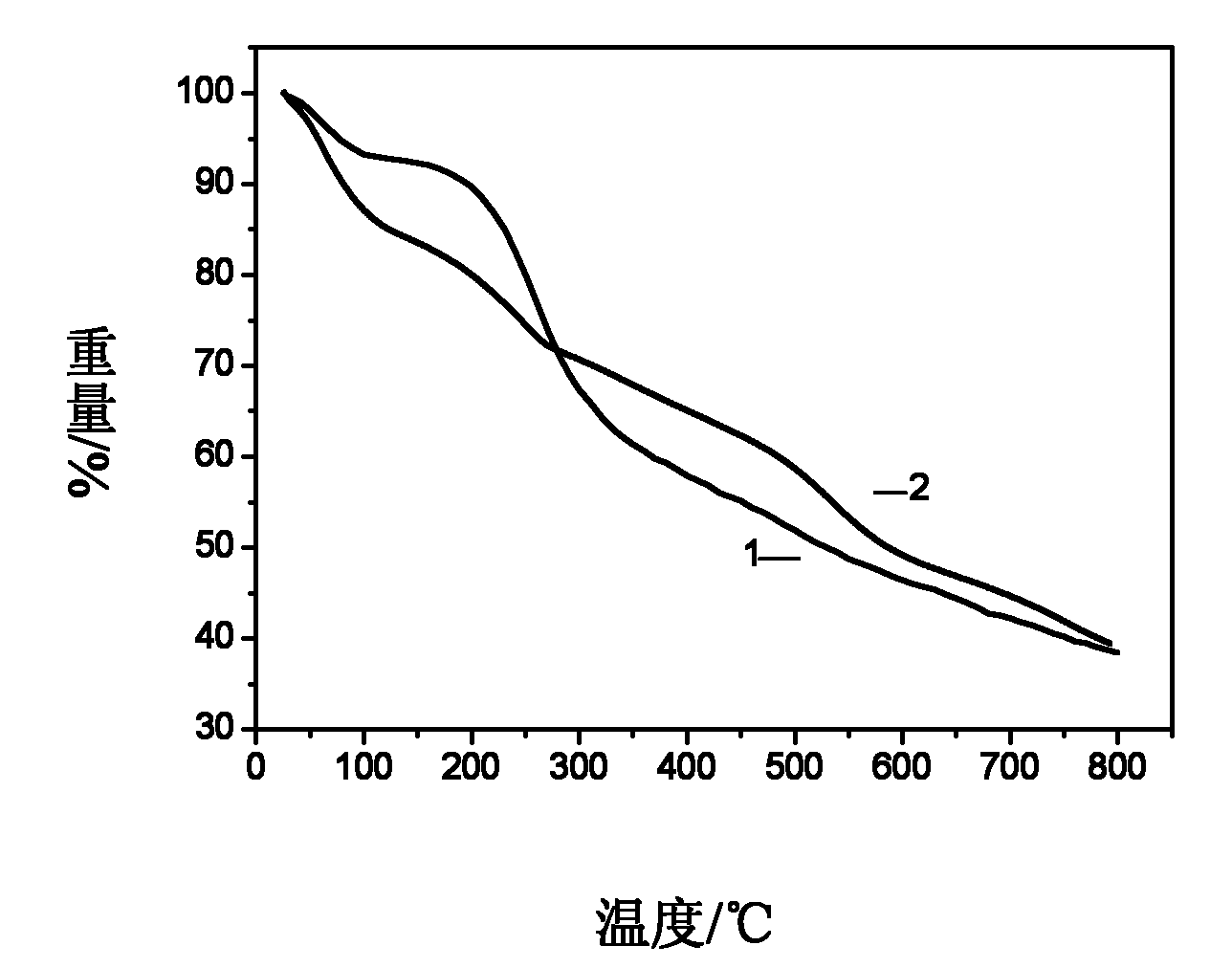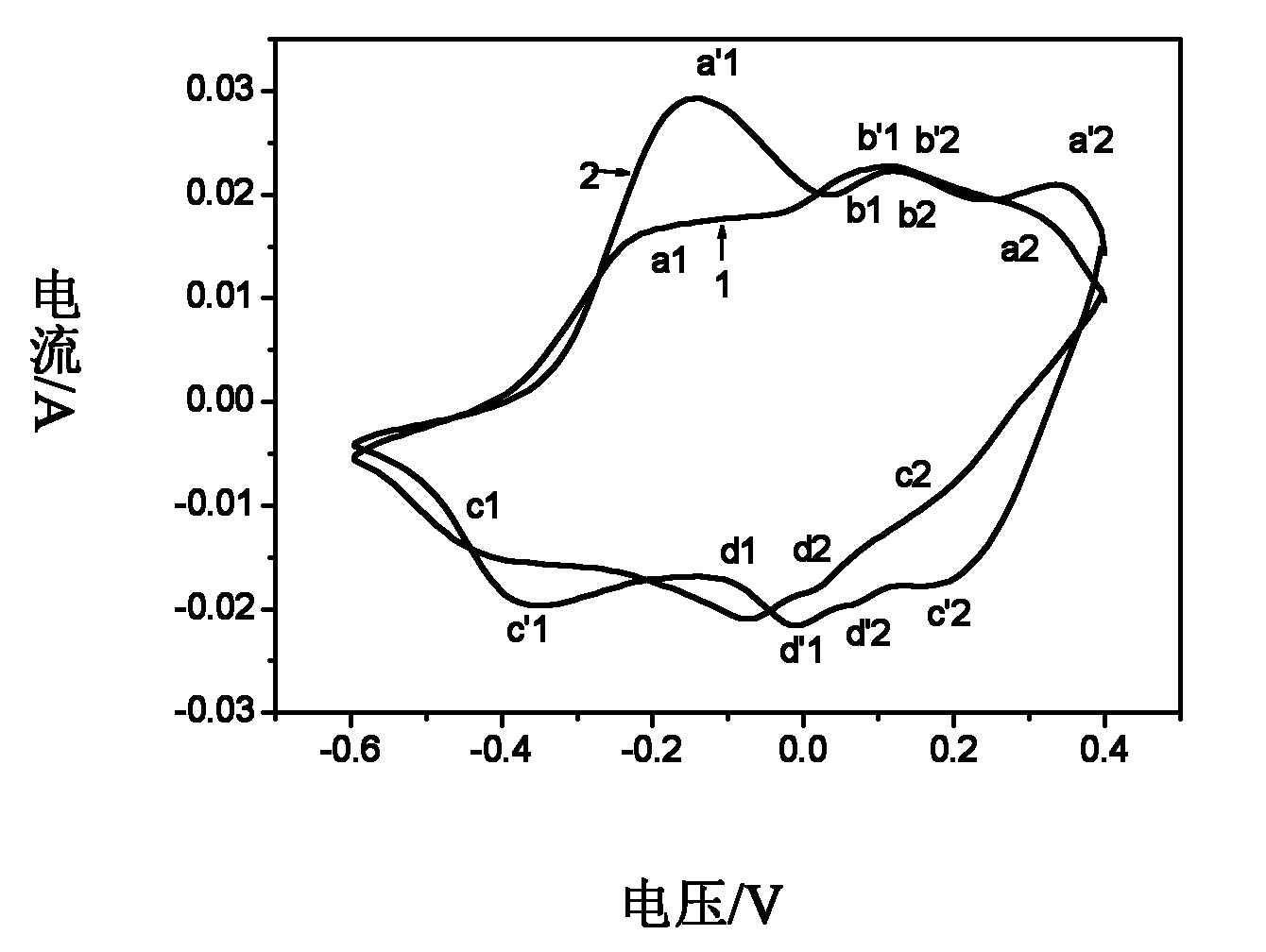Method for preparing polyaniline nanometer wires by using ultrasonic radiation
A technology of ultrasonic radiation and polyaniline, applied in the direction of nanotechnology, nanotechnology, nanostructure manufacturing, etc., can solve the problems of cumbersome reaction process, high cost, unfavorable mass production, etc.
- Summary
- Abstract
- Description
- Claims
- Application Information
AI Technical Summary
Problems solved by technology
Method used
Image
Examples
Embodiment 1
[0018] Add 200ml of 1mol / l hydrochloric acid (HCl) into a 250ml three-neck flask, stir for 30min, then take 1ml of aniline (ANI), and dropwise add it to the reaction solution at a rate of 0.02ml / min. After continuing to stir for 1 hour, 50 ml of a solution containing 2.5 g of ammonium persulfate was taken and added dropwise to the reaction solution at a rate of 1 ml / min. The reaction was carried out at 20° C. for 8 hours under continuous stirring. During the whole process of the reaction, it is accompanied by ultrasonic irradiation (300W). After the reaction, the HCl-doped PANI nanorods were obtained after suction filtration, washing with dilute hydrochloric acid, absolute ethanol, and deionized water, and vacuum drying at 45°C.
Embodiment 2
[0020] Add 200ml of 1mol / l hydrochloric acid (HCl) into a 250ml three-neck flask, stir for 30min, then take 1ml of aniline (ANI), and dropwise add it into the reaction solution at a rate of 0.05ml / min. After continuing to stir for 1 hour, 50 ml of a solution containing 2.5 g of ammonium persulfate was added dropwise to the reaction solution at a rate of 3 ml / min. The reaction was carried out at 24°C for 6 hours under continuous stirring. During the whole process of the reaction, it is accompanied by ultrasonic irradiation (300W). After the reaction, the HCl-doped PANI nanorods were obtained after suction filtration, washing with dilute hydrochloric acid, absolute ethanol, and deionized water, and vacuum drying at 45°C.
Embodiment 3
[0022] Add 200ml of 1mol / l hydrochloric acid (HCl) into a 250ml three-neck flask, stir for 30min, then take 1ml of aniline (ANI), and dropwise add it into the reaction solution at a rate of 0.05ml / min. After continuing to stir for 1 hour, 50 ml of a solution containing 2.5 g of ammonium persulfate was added dropwise to the reaction solution at a rate of 3 ml / min. The reaction was carried out at 16° C. for 10 hours under continuous stirring. During the whole process of the reaction, it is accompanied by ultrasonic irradiation (300W). After the reaction, the HCl-doped PANI nanorods were obtained after suction filtration, washing with dilute hydrochloric acid, absolute ethanol, and deionized water, and vacuum drying at 45°C.
PUM
| Property | Measurement | Unit |
|---|---|---|
| diameter | aaaaa | aaaaa |
Abstract
Description
Claims
Application Information
 Login to View More
Login to View More - R&D Engineer
- R&D Manager
- IP Professional
- Industry Leading Data Capabilities
- Powerful AI technology
- Patent DNA Extraction
Browse by: Latest US Patents, China's latest patents, Technical Efficacy Thesaurus, Application Domain, Technology Topic, Popular Technical Reports.
© 2024 PatSnap. All rights reserved.Legal|Privacy policy|Modern Slavery Act Transparency Statement|Sitemap|About US| Contact US: help@patsnap.com










